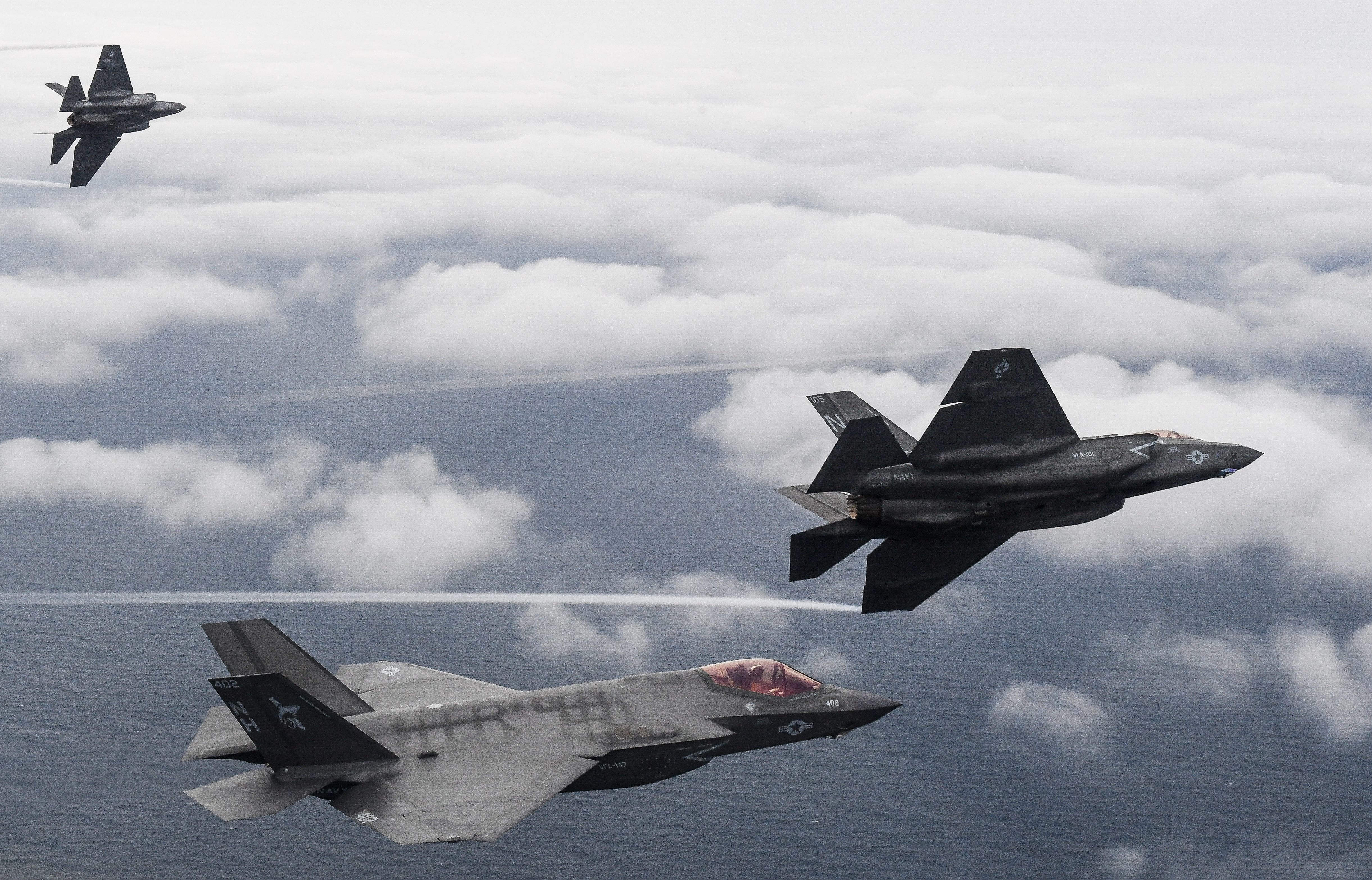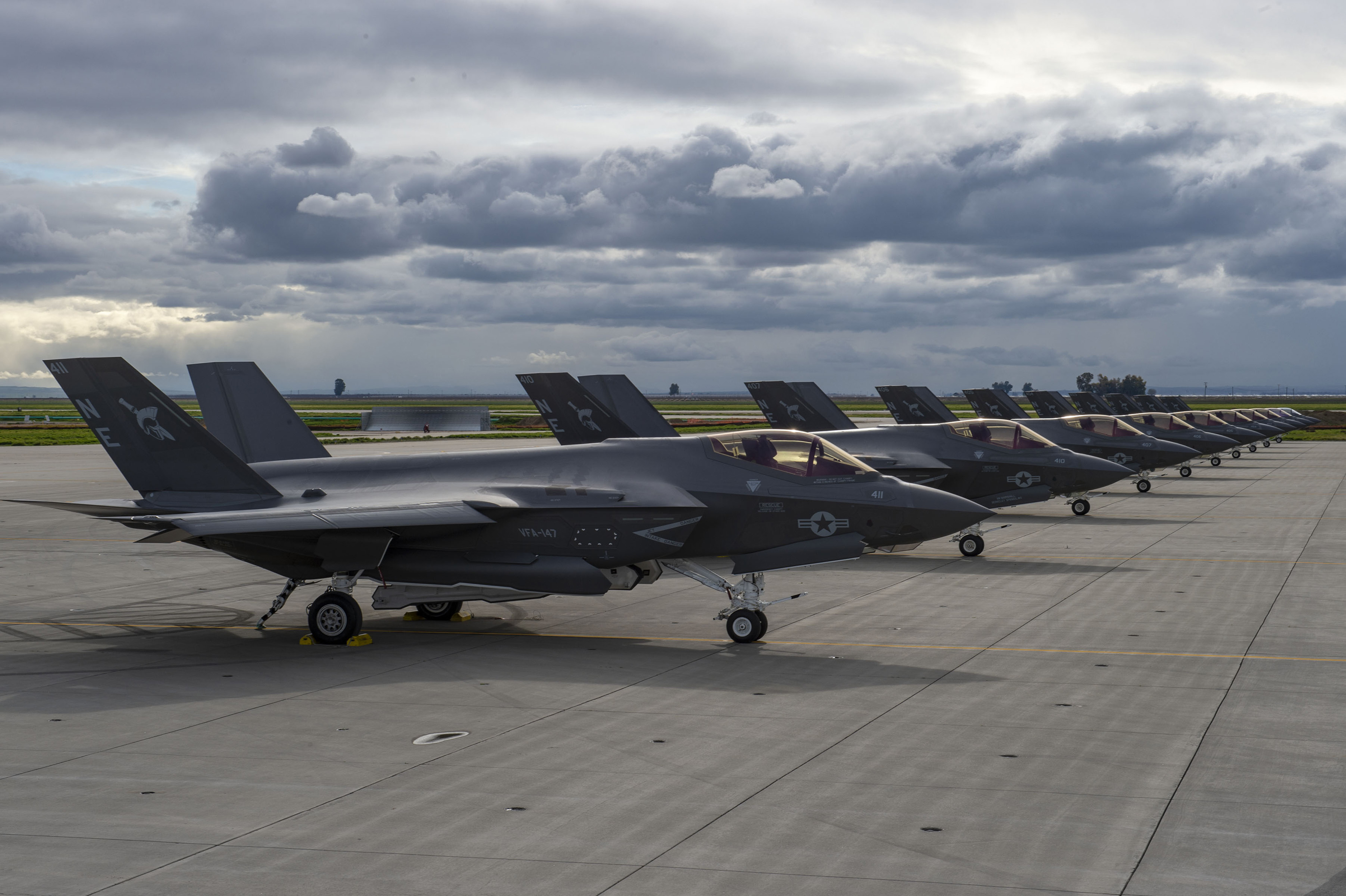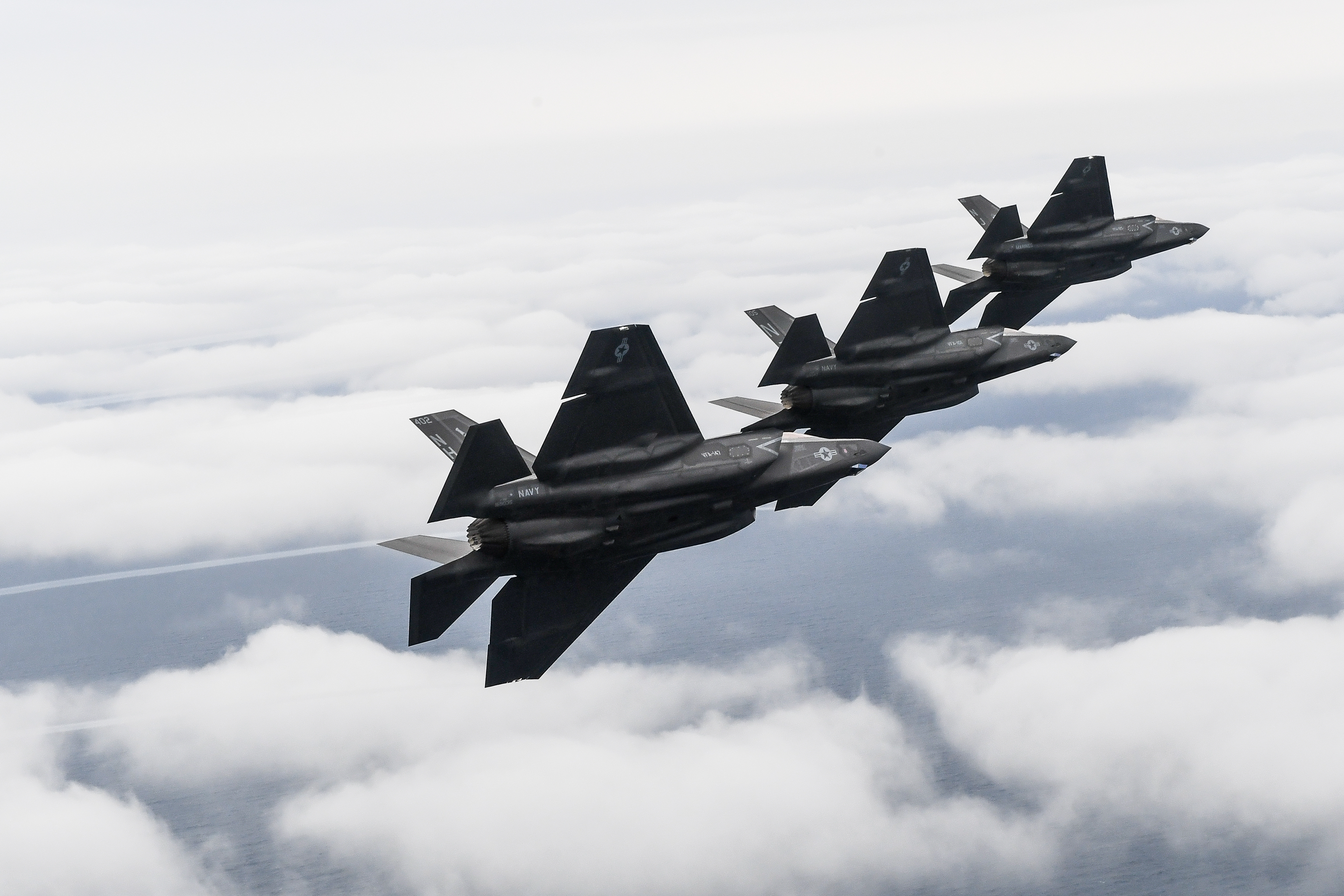
The Navy declared today that its F-35C Joint Strike Fighter was operationally ready to deploy and conduct missions around the world.
The initial operational capability (IOC) declaration comes after the Navy’s first F-35C squadron, Strike Fighter Squadron (VFA) 147, conducted aircraft carrier qualifications aboard USS Carl Vinson (CVN-70) in early December, received its safe-for-flight operations certification on Dec. 12 and spent the intervening weeks working with the Navy’s test community to prove it could operate and maintain the new stealthy jets.
“The F-35C is ready for operations, ready for combat and ready to win,” Commander of Naval Air Forces Vice Adm. DeWolfe Miller said in a statement today.
“We are adding an incredible weapon system into the arsenal of our Carrier Strike Groups that significantly enhances the capability of the joint force.”
Before the Navy would declare VFA-147 operationally capable, the squadron had to prove several things, Joint Strike Fighter Wing commodore Capt. Max McCoy told USNI News in November: the squadron had to be fully manned, with all pilots qualified for shore-based operations and then carrier operations from Vinson; the pilots had to prove they could conduct a range of operations and maneuvers; the maintainers had to prove they could keep the new planes flying; and the Navy had to prove it could sustain the squadron through a mature logistics system.
The Navy added in its statement that “in order to declare IOC, the first operational squadron must be properly manned, trained and equipped to conduct assigned missions in support of fleet operations. This includes having 10 Block 3F, F-35C aircraft, requisite spare parts, support equipment, tools, technical publications, training programs and a functional Autonomic Logistic Information System (ALIS). Additionally, the ship that supports the first squadron must possess the proper infrastructure, qualifications and certifications. Lastly, the Joint Program Office (JPO), industry, and Naval Aviation must demonstrate that all procedures, processes and policies are in place to sustain operations.”

“We’re very proud of what our sailors have accomplished in the Joint Strike Fighter community,” McCoy, the JSF wing commander, said in the statement.
“Their commitment to mission delivered fifth-generation capability to the carrier air wing, making us more combat effective than ever before. We will continue to learn and improve ways to maintain and sustain F-35C as we prepare for first deployment. The addition of F-35C to existing carrier air wing capability ensures that we can fight and win in contested battlespace now and well into the future.”
“The F-35C will revolutionize capability and operating concepts of aircraft carrier-based naval aviation using advanced technologies to find, fix and assess threats and, if necessary, track, target and engage them in all contested environments,” Rear Admiral Dale Horan, the director of the Navy’s F-35C Fleet Integration Office, said in the statement.
“This accomplishment represents years of hard work on the part of the F-35 Joint Program Office and Naval Aviation Enterprise. Our focus has now shifted to applying lessons learned from this process to future squadron transitions, and preparing VFA-147 for their first overseas deployment.”
Today’s declaration greenlights the squadron to begin preparing for the first-ever deployment with the F-35C as part of a carrier air wing – likely aboard Vinson in 2021.
The Navy had hoped to declare IOC by August 2018 but had listed February 2019 as the threshold requirement, or the minimum acceptable date.
The Marine Corps declared IOC on its F-35B vertical takeoff and landing variant on July 31, 2015, and the Air Force declared IOC on its F-35A conventional variant a year later on Aug. 2, 2016. In addition to flying its own F-35B variant, the Marine Corps will also buy four squadrons of F-35C carrier-variant JSFs to operate onboard Navy aircraft carriers.

F-35C Testing and Fielding Timeline
- F-35Cs began arriving at Naval Air Station Patuxent River in 2011 for testing, and by November that year a JSF had conducted its first ground-based catapult launch from Pax River. In 2012, the final test jets had arrived at Pax River; a carrier-landing assistance tool began ground-based testing, and the first external weapons test flight took place.
- In 2013 the first F-35Cs were delivered to a squadron – Strike Fighter Squadron (VFA) 101, the Navy’s F-35C fleet replacement squadron at Eglin Air Force Base, Fla.
- On Nov. 3, 2014, an F-35C made its first-ever arrested landing on a carrier, aboard USS Nimitz (CVN-68). The jets then conducted 11 days of sea trials aboard Nimitz, completing Developmental Test-I with Air Test and Evaluation Squadron 23 (VX-23) and meeting all test objectives to prove interoperability between the ship and the planes and carrier suitability for at-sea operations. In September 2015 DT-II was conducted aboard USS Eisenhower (CVN-69).
- In September 2017 USS Carl Vinson (CVN-70) conducted its first F-35C at-sea operations, and in December USS Lincoln (CVN-72) hosted carrier qualifications for the Navy’s first nine pilots who were set to conduct at-sea F-35C operations.
- In August 2018, Lincoln hosted the first integrated air wing operations, where the ship’s crew launched and recovered, towed and maintained both F-35s and other aircraft types at the same time, rather than carefully handling the new airplanes separately. This integrated air wing operation used airplanes from VFA-125, a fleet replacement squadron, and VFA-147.
- In December 2018, VFA-147 began its bid for independence – the squadron reached the safe-for-flight milestone, which allowed it to fly and maintain the planes without supervision from the fleet replacement squadron.





